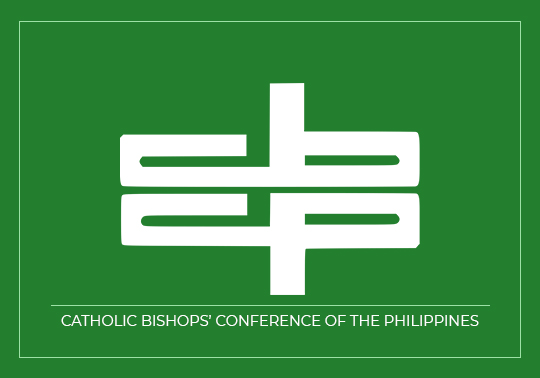The Catholic Bishops’ Conference of the Philippines or CBCP is an institution formed by the Second Vatican Council. It is a group of Catholic Bishops in the Philippines “whereby, according to the norm of law, they jointly exercise certain pastoral functions on behalf of the Christian faithful of their territory in view of promoting that greater good which the Church offers to humankind, especially through forms and programs of the apostolate which are fittingly adapted to the circumstances of the time and place” (CIC, c. 447)
In exercising its apostolic and pastoral role, it does not hamper the autonomy of each bishop in their ecclesiastical jurisdictions. CBCP specified the following as its objectives in its constitution amended in 1994: “the promotion of the spirit of solidarity in the Philippine Church; the formulation of joint pastoral policies and programs; the active engagement of the Philippine Church as a body in the pastoral thrusts of the universal Church; and the assumption of responsibilities as evangelizer in its relationship with all peoples in the country, especially the civil authority.” Its episcopal commissions coordinate resources from different ecclesiastical jurisdictions in implementing its pastoral programs and policies.
Tracing the origins of the Catholic Bishops’ Conference of the Philippines points to the creation of the Catholic Welfare Organization (CWO) on February 15, 1945. Bishop William (Guglielmo) Piani, the Apostolic Delegate to the Philippines at that time, created the organization despite the war raging in the Philippines. A repaired coop at the University of Santo Tomas served as its first central office; the organization transferred its office to places around Manila before finally settling in 470 General Luna St., Intramuros in 1983. In creating the CWO, inspired by the model of the United States Bishops’ National Catholic Welfare Council (NCWC), Msgr. Piani’s main objective was “to meet the war emergency created by the destruction of so many towns.”
Msgr. Piani proposed the services of the CWO to Gen. Douglas MacArthur, acknowledging the need for a coordinated effort to attend to the affected people. The former then accepted the offer. With Rev. John Hurley of the Jesuits in charge of the relief operations, CWO’s first personnel included lay people and clerics. Sheltering thousands of refugees during and after the battle of Manila, the organization became a significant outlet of the Philippine Civil Affairs Unit (PCAU) foodstuff and deployed groups in burying many dead bodies.
The first meeting of all the bishops held on July 17, 1945, took place in Manila after the Japanese Occupation. Three days after the meeting, Msgr. Piani granted the bishops’ request to take over the direction of the CWO, making it the official group of the Hierarchy of the Philippines. On January 23, 1946, as the Holy See issued the proposal and decree to incorporate CWO, the Apostolic Delegate duly registered its articles of incorporation in the Securities and Exchange Commission in Manila. Its Article of Incorporation stated its purpose “to unify, coordinate, and organize the Catholic people of the Philippines in works of education, social welfare, religious and spiritual aid, and other activities.”
As the Second Vatican Council’s developments “created a paradigm shift in ecclesiology”, the CWO experienced a significant challenge to correspond to its “theological and pastoral implications.” CWO then changed its name into what would be today’s Catholic Bishops’ Conference of the Philippines (CBCP) and reformulated its purpose as “to study, promote, coordinate in a way corresponding ever more to the needs of the present time the apostolate of the Church in the Philippines.” To date, CBCP is currently headed by its president, Most. Rev. Pablo Virgilio David, D.D. together with its Permanent Council Officers, Regional Representatives, Episcopal Commissions, Committees, and Offices.
REFERENCES:
History of CBCP https://cbcponline.net/history-of-cbcp/
